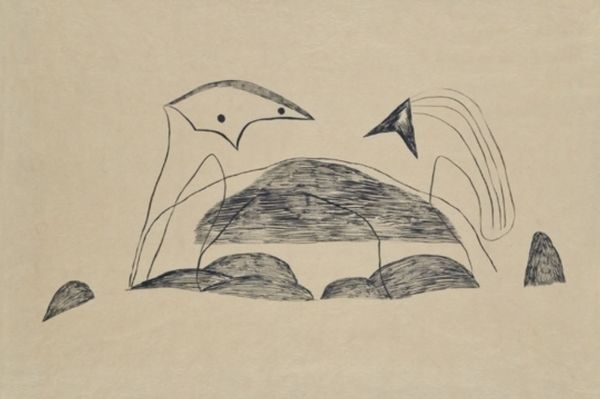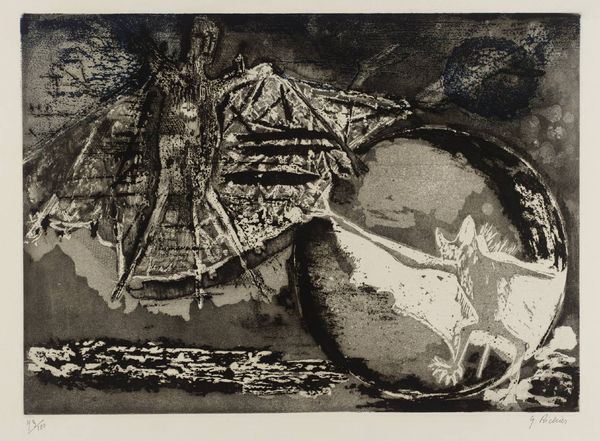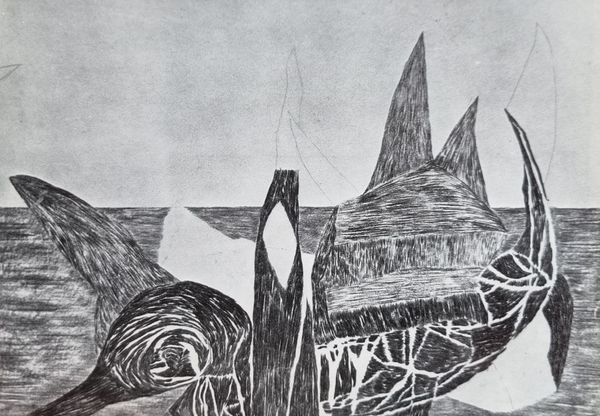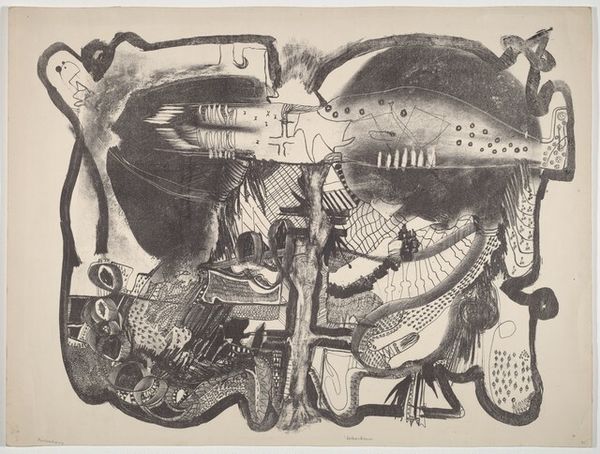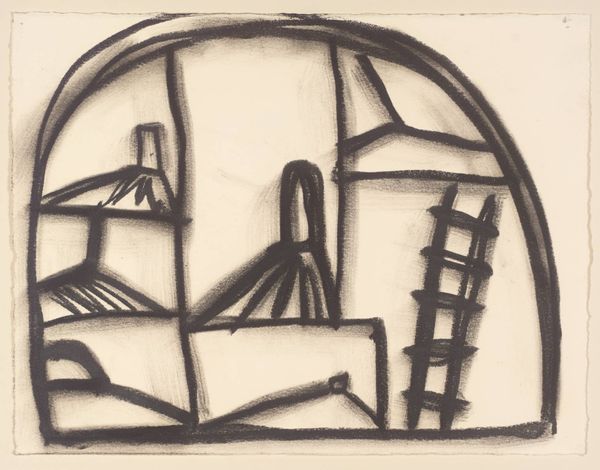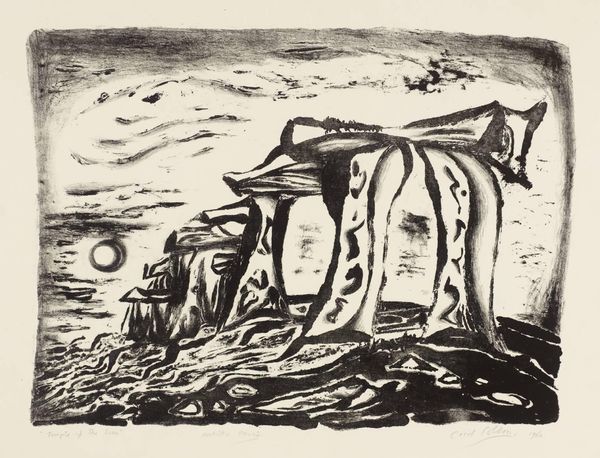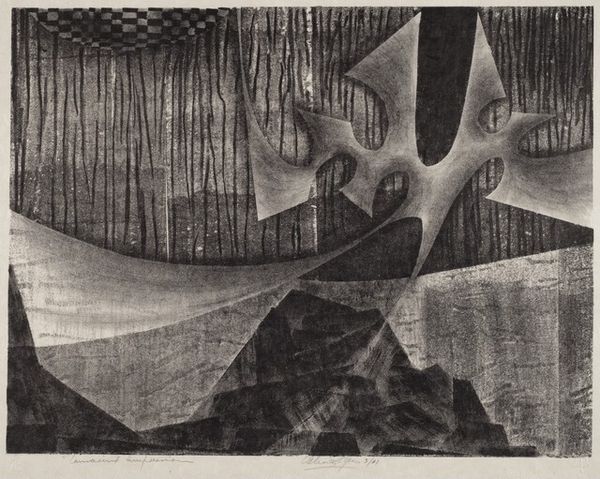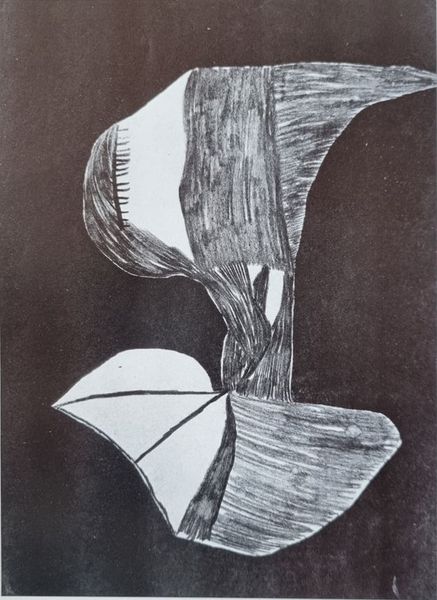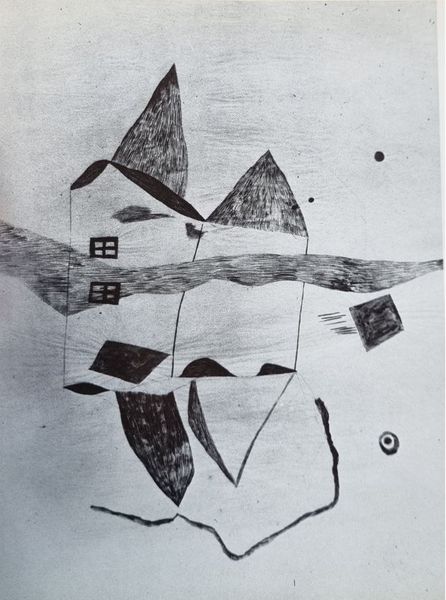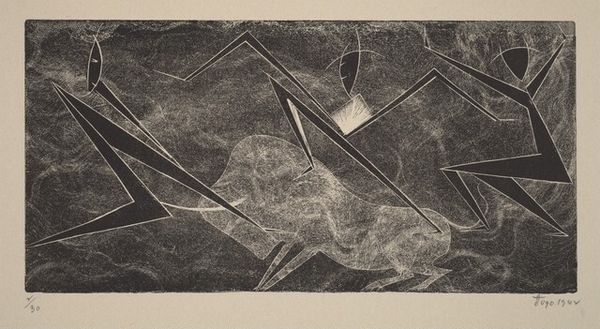
Copyright: Public domain
Curator: Looking at this striking image by Vajda Lajos, created in 1939, a pencil drawing titled "Maszkos Táj" – or "Masked Landscape" – I’m struck by the raw emotion it evokes. Editor: Yes, the overall impression is rather unsettling. Angular forms seem to clash with each other, creating a disturbing atmosphere. The heavy use of dark pencil shading intensifies this feeling. Curator: Precisely! I see in it a reflection of the tumultuous political environment in Europe at that time, as the march toward war began to permeate even the artistic communities. Editor: Tell me more. How do you think Vajda expressed those external pressures within this pencil drawing? Curator: The recurring shapes bring to mind the distorted human figures that emerged with full force from movements like surrealism and expressionism. I interpret these biomorphic and geometric shapes, almost totemic, as a commentary on societal disintegration, on the rise of fractured identities in Europe. Editor: That reading feels compelling. I'm also caught up by how elements such as the ladder are thrown so carelessly and yet possess enormous significance in a work where space seems to warp unexpectedly. Is this possibly intended to convey concepts about forced exodus and vanishing futures? Curator: Very astute! Symbolically, ladders do stand for transition and spiritual aspiration, but here, tilting in a disrupted and menacing field, this symbolism becomes twisted and troubled. It might suggest hopes shattered or opportunities snatched away by the looming war. What makes this picture all the more relevant is Vajda's historical significance, as his commitment to avant-garde expression made him an important advocate. Editor: Thank you for shedding light on Vajda's historical background as an artist. It helps see through the artwork's intricate symbolism and relate to its intended purpose, which is something people are yearning for. Curator: My pleasure. And it just goes to show how an artist like Vajda gives enduring visual representation to the anguish of his historical experience, even decades after the events.
Comments
No comments
Be the first to comment and join the conversation on the ultimate creative platform.
